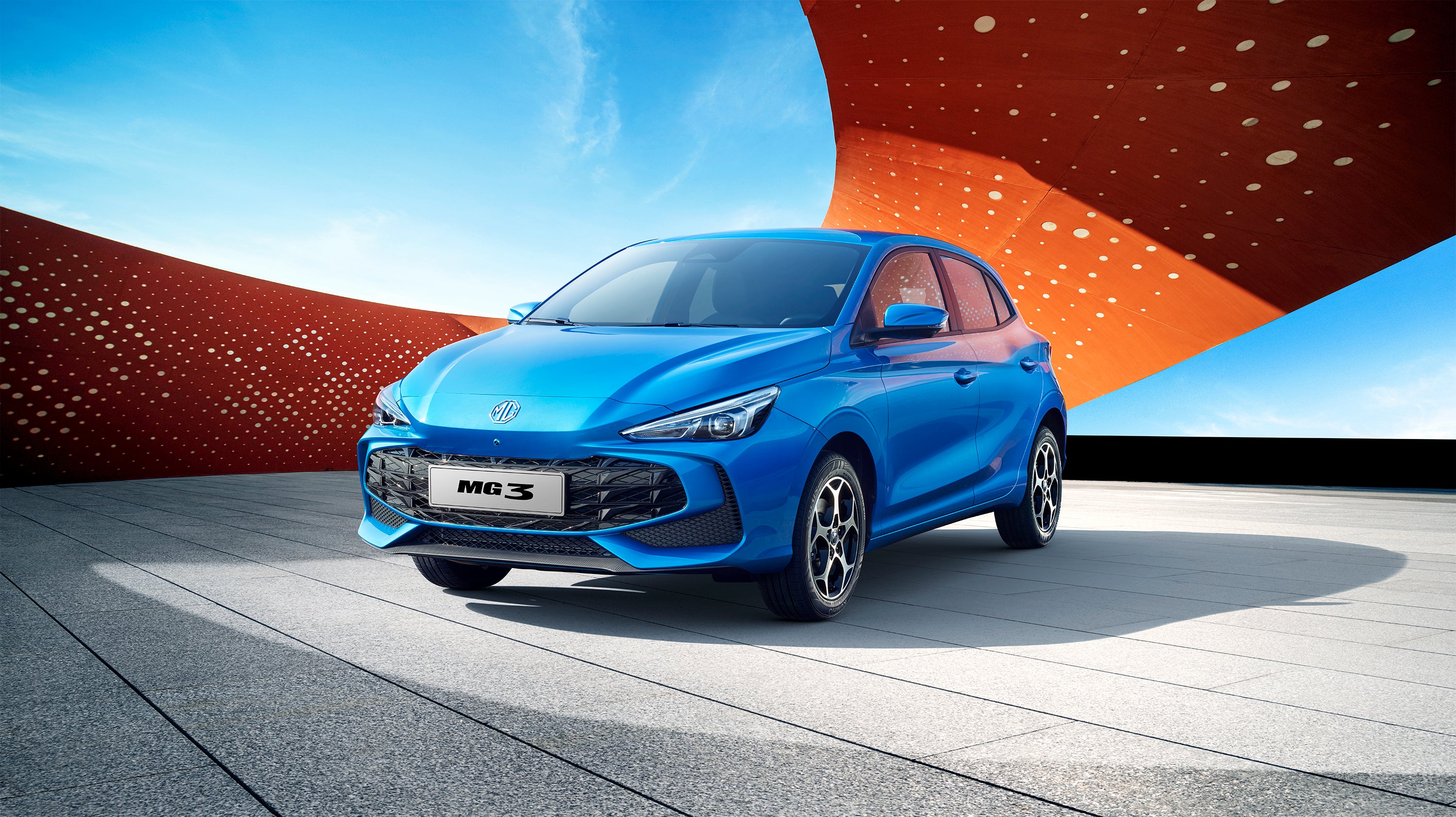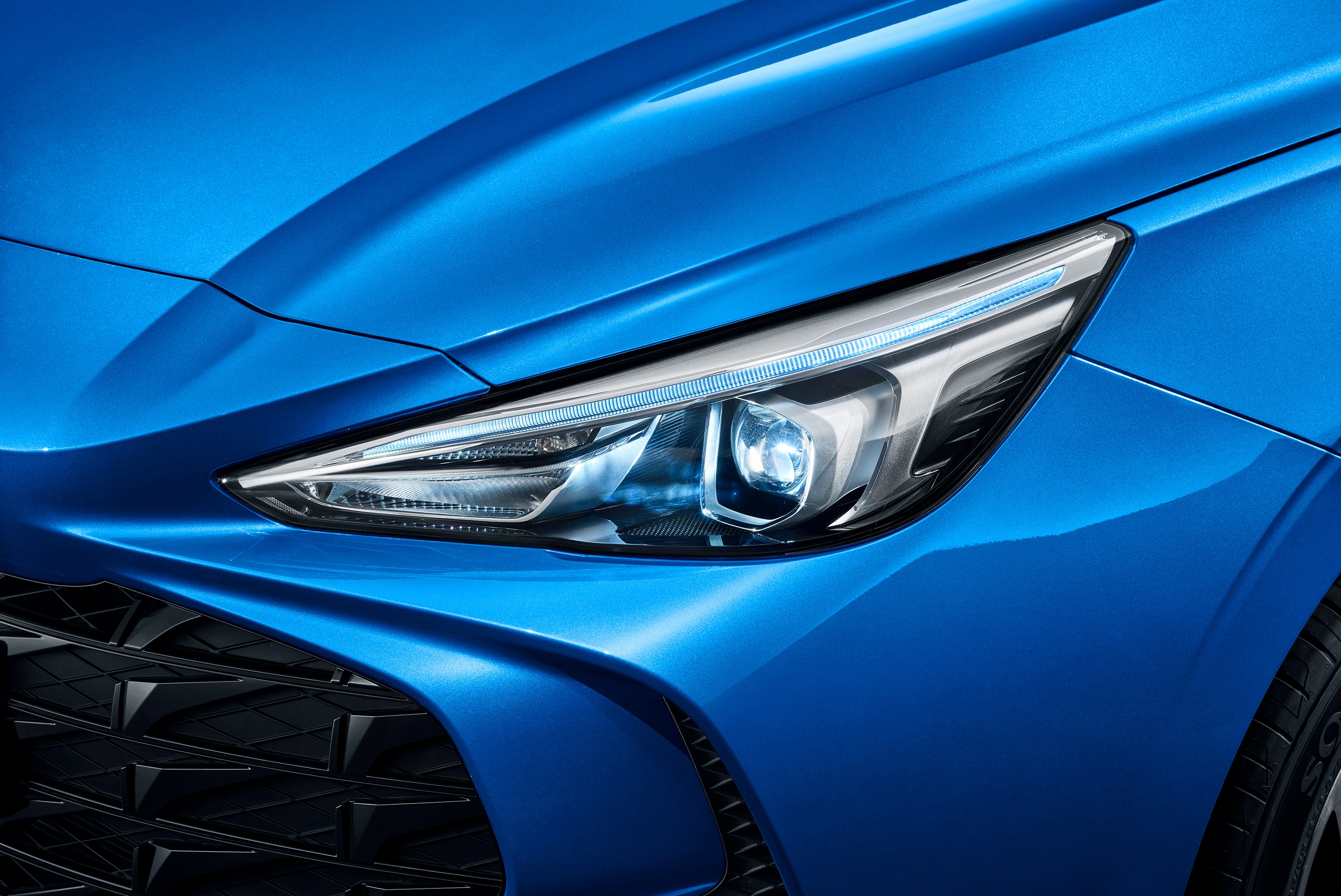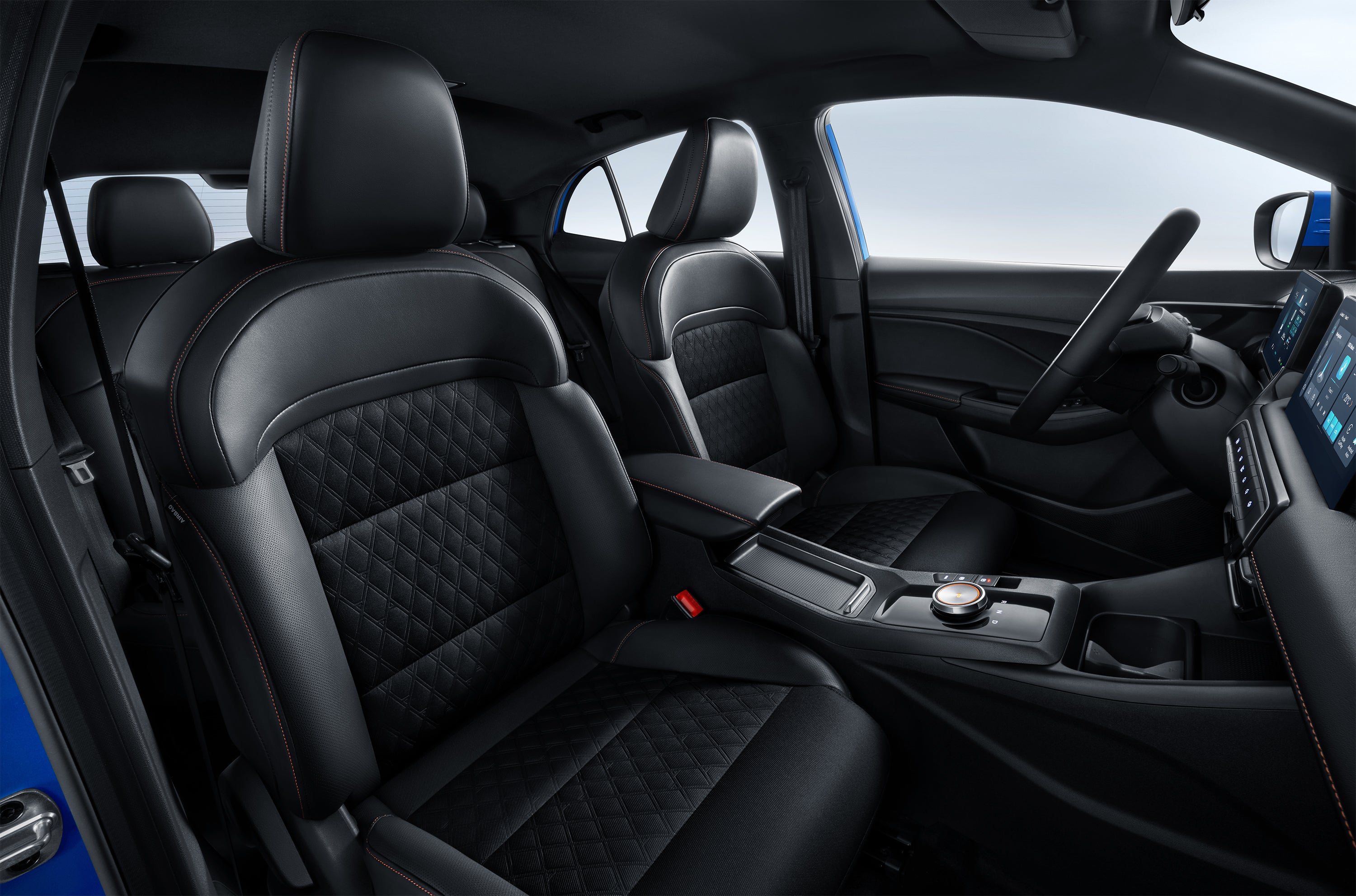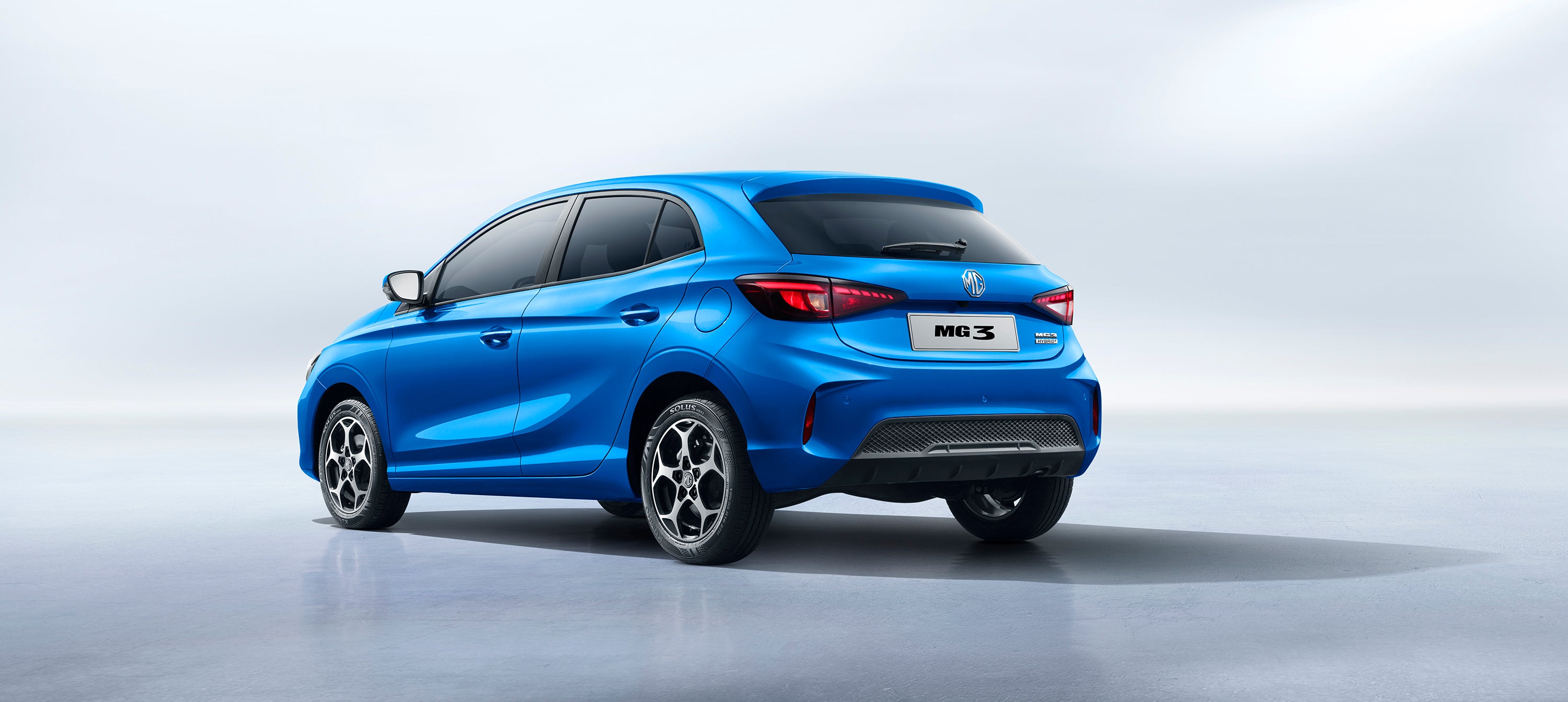Triple threat: MG3 Hybrid+ Trophy
For the consumer, the MG revival is a thing of wonder, writes Sean O’Grady. Technologically advanced, unconventional and handsome. Has Shanghai accidentally reincarnated the MG Metro of the 1980s?


The fascinating thing about the MG3 Hybrid+ is that it is one of the smallest, cheapest but also most technologically advanced cars on the market – and these three achievements are, of course, somewhat related.
Compact though it is, this all-new MG3, replacing a relatively undistinguished predecessor, is indeed a “self-charging” hybrid (ie no plug-in facility to top up the battery), but it is a far from conventional one.
Usually such hybrids primarily use the petrol engine for propulsion, with the batteries supplying an electric motor with smooth, silent running around town, say, and extra power when needed at higher speeds. There are variations on this theme (Toyota runs a different system to Honda, for example), but it is very much the case that the internal combustion engine is the dominant partner in the double act – a petrol car with an electric motor attached.
The MG, by contrast, is more like an electric car with a petrol engine attached. It seems the obvious thing to do, given current trends.

The “+” in the MG3 Hybrid+ refers to the highly versatile way that the electric motor, battery pack and petrol engine interact, and the result is a highly accelerative product, making maximum use of the near-200 horsepower at its disposal.
So, the MG can operate as a pure battery electric car, as a pure petrol car, a petrol car that feeds the electric motor with power, and, as a more conventional hybrid, with all the systems working together.
Such is the power available that it only needs a three-speed automatic, but an awful lot of clever software. Sometimes it can’t quite keep up with the demands of the enthusiastic driver, but that’s really the only flaw. As so often in today’s market, drivers can switch between Eco, Standard, and Sport modes as the mood takes them.

In its own small way, the MG3 Hybrid+, manufactured now by SAIC Motor in Shanghai (its British roots long abandoned), is a symbol of the technical and industrial prowess of China.
Not that any of that need concern the MG’s driver, who can let the car do all the thinking and enjoy all the performance at their disposal, with neat handling to match. It’s like one of those “warm hatches” we used to have in abundance when cars were smaller and less pretentious than today.
THE SPEC
MG3 Hybrid+ Trophy
Price: £20,495 (range starts at £18,495)
Engine capacity: 1.5l petrol 4-cyl, 3-sp auto + elec motor
Power output (PS): 191
Top speed (mph): 105
0 to 60 (seconds): 8.0
Fuel economy (mpg): 53
CO2 emissions (WLTP, g/km): 100
This MG doesn’t aspire to be anything more than practical transport that can make virtually any journey (not to a funeral, obvs) more fun than it has any right to be. It certainly compares well with the mainstream version of the Toyota Yaris and Skoda Fabia, two close competitors, in terms of price, accommodation and performance.
The latest Suzuki Swift and revised Kia Picanto will also have their work cut out to keep up with the MG. Without anyone really intending it, SAIC Motor has, probably accidentally, reincarnated the MG Metro of the 1980s, but with two more doors and no oil leaks.

It’s also a handsome little thing, much more distinctive than its predecessor and with a more assertive face, more muscular presence and what looks to be a high quality, lustrous paint job. The fit and finish are on a par with the competition, and all models get a full suite of driver assistance, plus a 10.25-inch touchscreen, satnav and electric windows front and rear.
For another £2,000 the Trophy version comforts you with heated seats, reassures you with a 360-degree colour camera and “leather-style” seats.

The touchscreen is complemented by a bank of piano-key switches for the climate controls, radio volume and demisting, which is better for safety. The built-in satnav is fitted as standard, as is smartphone integration through Apple CarPlay/Android Auto, and the car has good, up-to-date connectivity.
It’s slightly fanciful to consider it a five-seater for full-grown adults, but there’s room enough in the back for two. Most will obviously be leased, but for the longer-term buyer there’s the reassurance of a 7-year/80,000-mile fully transferable warranty as standard.
Not that it’s necessarily a cause for concern, but this model hasn’t yet had its NCAP crash test result. To be honest, the main risk with a new MG is geopolitical – trade tensions with China, though that’s true of many cars of Chinese manufacture by European brands (eg Volvo EX30, Dacia Spring, Citroen C5 X, for example).

MG (originally “Morris Garages”) is celebrating its centenary this year, and it would have been nice (to say the least) if the brand was still making its vehicles in the UK, if not Abingdon, its home for so long until closure in the Thatcher recession, in 1980.
The products today, all built in China, are certainly world class, from the stunningly styled and efficient MG4 to the new MG HS SUV to the dramatic new Cyberster sports car, in the best MG tradition, both “pure” battery electric vehicles.
For the consumer, the MG revival is a thing of wonder, but from a British, industrial point of view, it begs lots of questions about what might have been. There’s a slightly bitter edge to the sweet little MG3.
Join our commenting forum
Join thought-provoking conversations, follow other Independent readers and see their replies
Comments
Bookmark popover
Removed from bookmarks